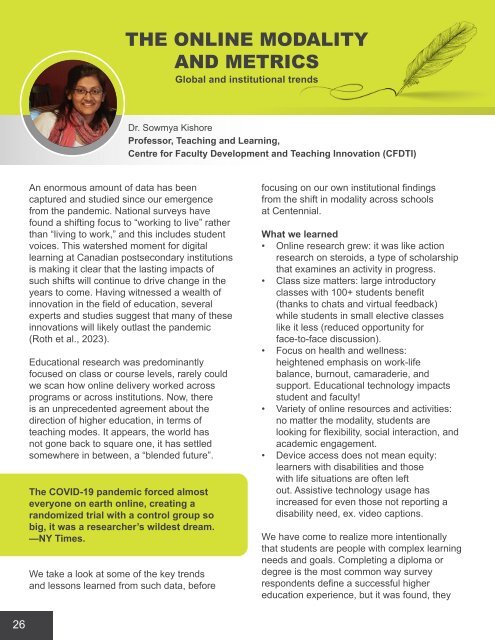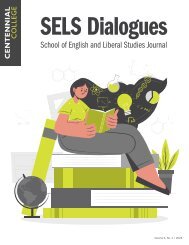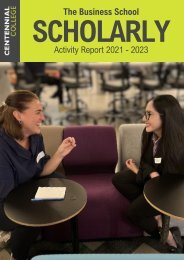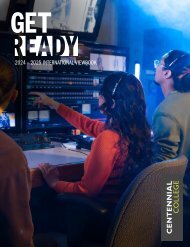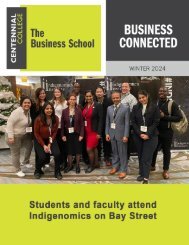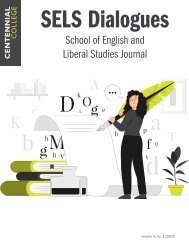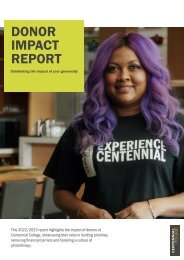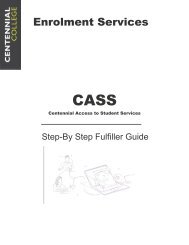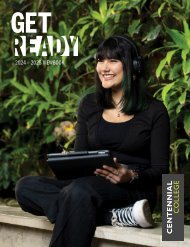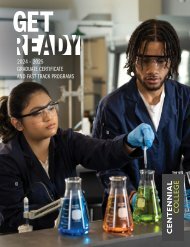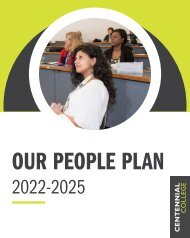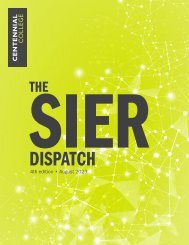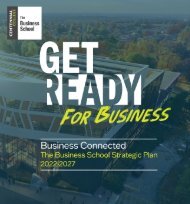The Teaching and Learning Innovation Digest - May 2023
Welcome to a truly special edition of the Teaching and Learning Innovation Digest! Our seventh annual academic publication has assumed an incredibly meaningful shape and form for a number of reasons. Not only did we receive an enthusiastic response with over 30 submissions via our institutional broadcast, but we also have consciously and intentionally embraced the principles of Universal Design for Learning by attempting to represent and celebrate the varied forms of expressions therein. From reflective essays, poetry, visual and performing arts, podcasts, video conversations to scholarly work, academic and applied research, news and updates, and interviews, this is truly a power-packed publication!
Welcome to a truly special edition of the Teaching and Learning Innovation Digest! Our seventh annual academic publication has assumed an incredibly meaningful shape and form for a number of reasons. Not only did we receive an enthusiastic response with over 30 submissions via our institutional broadcast, but we also have consciously and intentionally embraced the principles of Universal Design for Learning by attempting to represent and celebrate the varied forms of expressions therein. From reflective essays, poetry, visual and performing arts, podcasts, video conversations to scholarly work, academic and applied research, news and updates, and interviews, this is truly a power-packed publication!
Create successful ePaper yourself
Turn your PDF publications into a flip-book with our unique Google optimized e-Paper software.
THE ONLINE MODALITY<br />
AND METRICS<br />
Global <strong>and</strong> institutional trends<br />
Dr. Sowmya Kishore<br />
Professor, <strong>Teaching</strong> <strong>and</strong> <strong>Learning</strong>,<br />
Centre for Faculty Development <strong>and</strong> <strong>Teaching</strong> <strong>Innovation</strong> (CFDTI)<br />
An enormous amount of data has been<br />
captured <strong>and</strong> studied since our emergence<br />
from the p<strong>and</strong>emic. National surveys have<br />
found a shifting focus to “working to live” rather<br />
than “living to work,” <strong>and</strong> this includes student<br />
voices. This watershed moment for digital<br />
learning at Canadian postsecondary institutions<br />
is making it clear that the lasting impacts of<br />
such shifts will continue to drive change in the<br />
years to come. Having witnessed a wealth of<br />
innovation in the field of education, several<br />
experts <strong>and</strong> studies suggest that many of these<br />
innovations will likely outlast the p<strong>and</strong>emic<br />
(Roth et al., <strong>2023</strong>).<br />
Educational research was predominantly<br />
focused on class or course levels, rarely could<br />
we scan how online delivery worked across<br />
programs or across institutions. Now, there<br />
is an unprecedented agreement about the<br />
direction of higher education, in terms of<br />
teaching modes. It appears, the world has<br />
not gone back to square one, it has settled<br />
somewhere in between, a “blended future”.<br />
<strong>The</strong> COVID-19 p<strong>and</strong>emic forced almost<br />
everyone on earth online, creating a<br />
r<strong>and</strong>omized trial with a control group so<br />
big, it was a researcher’s wildest dream.<br />
—NY Times.<br />
We take a look at some of the key trends<br />
<strong>and</strong> lessons learned from such data, before<br />
focusing on our own institutional findings<br />
from the shift in modality across schools<br />
at Centennial.<br />
What we learned<br />
• Online research grew: it was like action<br />
research on steroids, a type of scholarship<br />
that examines an activity in progress.<br />
• Class size matters: large introductory<br />
classes with 100+ students benefit<br />
(thanks to chats <strong>and</strong> virtual feedback)<br />
while students in small elective classes<br />
like it less (reduced opportunity for<br />
face-to-face discussion).<br />
• Focus on health <strong>and</strong> wellness:<br />
heightened emphasis on work-life<br />
balance, burnout, camaraderie, <strong>and</strong><br />
support. Educational technology impacts<br />
student <strong>and</strong> faculty!<br />
• Variety of online resources <strong>and</strong> activities:<br />
no matter the modality, students are<br />
looking for flexibility, social interaction, <strong>and</strong><br />
academic engagement.<br />
• Device access does not mean equity:<br />
learners with disabilities <strong>and</strong> those<br />
with life situations are often left<br />
out. Assistive technology usage has<br />
increased for even those not reporting a<br />
disability need, ex. video captions.<br />
We have come to realize more intentionally<br />
that students are people with complex learning<br />
needs <strong>and</strong> goals. Completing a diploma or<br />
degree is the most common way survey<br />
respondents define a successful higher<br />
education experience, but it was found, they<br />
are also hoping to secure a job, achieve<br />
personal growth, secure a high salary, <strong>and</strong><br />
much more!<br />
Let’s accept, the online versus face-to-face<br />
dichotomy is being disrupted, <strong>and</strong> this reflects<br />
the increased interest in teaching <strong>and</strong> learning<br />
online <strong>and</strong> via hybrid modes, even prior to<br />
the p<strong>and</strong>emic.<br />
Post-p<strong>and</strong>emic trends in Canadian higher<br />
educational l<strong>and</strong>scape<br />
• Faculty Professional Development: nearly<br />
all institutions are expected to provide<br />
support <strong>and</strong> training in the areas of effective<br />
use of the institution’s learning management<br />
system (LMS), teaching with technology,<br />
alternative assessment techniques using<br />
digital technologies, funding, <strong>and</strong> resources<br />
for faculty to use innovative technologies in<br />
their courses.<br />
• Renewed Investment: in technology<br />
infrastructure, open educational resources<br />
(OER) <strong>and</strong> Instructional Design for online<br />
course development.<br />
• Increase in internationalization: despite a<br />
slump during the p<strong>and</strong>emic, this figure is<br />
estimated to jump to three million by 2030.<br />
• Inclusive pedagogy: to create equitable,<br />
responsive learning environments that offer<br />
personalized learning approaches for the<br />
diverse student body.<br />
• Focus on micro-credentials <strong>and</strong> soft skill<br />
developments: including teamwork ability,<br />
creativity, interdisciplinary knowledge,<br />
interpersonal communication, <strong>and</strong><br />
cross-cultural competencies.<br />
Challenges that still need attention<br />
• Quality assurance <strong>and</strong> learner engagement.<br />
• Universal Design for <strong>Learning</strong> (UDL)<br />
integration in courses <strong>and</strong> services.<br />
• H<strong>and</strong>s-on, experiential learning, virtual<br />
work-integrated learning placements.<br />
• Creating community <strong>and</strong> opportunities for<br />
learners to get to know one another.<br />
• Just-In-Time training <strong>and</strong> support <strong>and</strong><br />
curation of asynchronous material.<br />
How did Centennial students re/TURN?<br />
We looked at student choices in modality<br />
by analyzing the changing numbers since<br />
early 2022, as seen in the charts that<br />
follow. In comparing domestic <strong>and</strong> international<br />
student markets, the proportion of Hybrid<br />
has continued to increase while that of inperson<br />
has dropped significantly from Fall<br />
2020. However, an interesting trend shows that<br />
more students have switched back to in-person<br />
since 2022.<br />
26<br />
27


